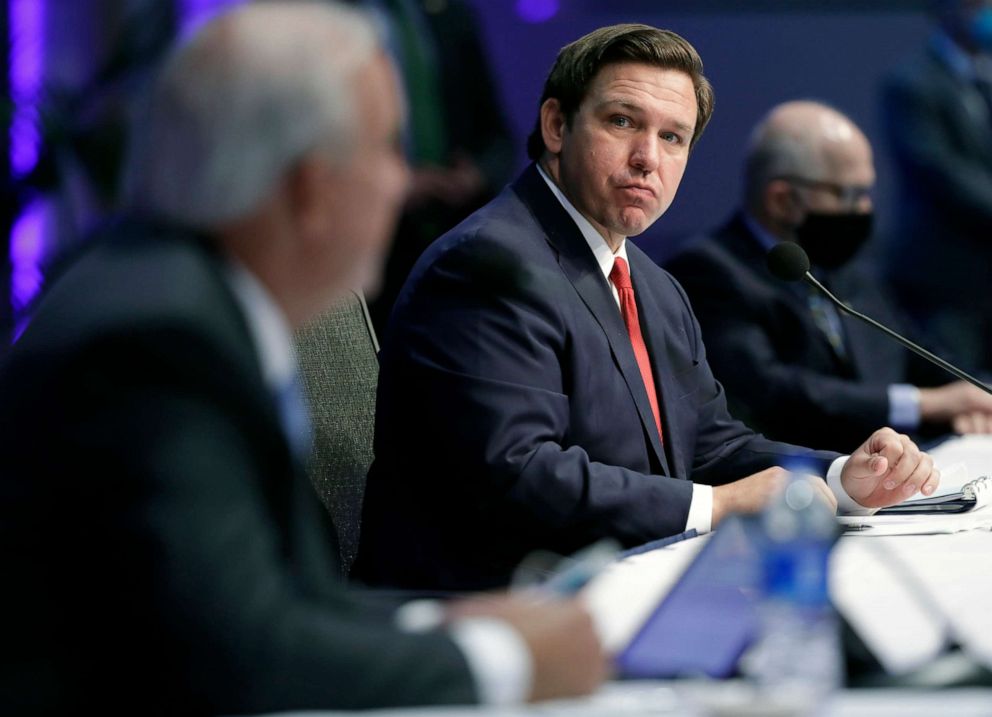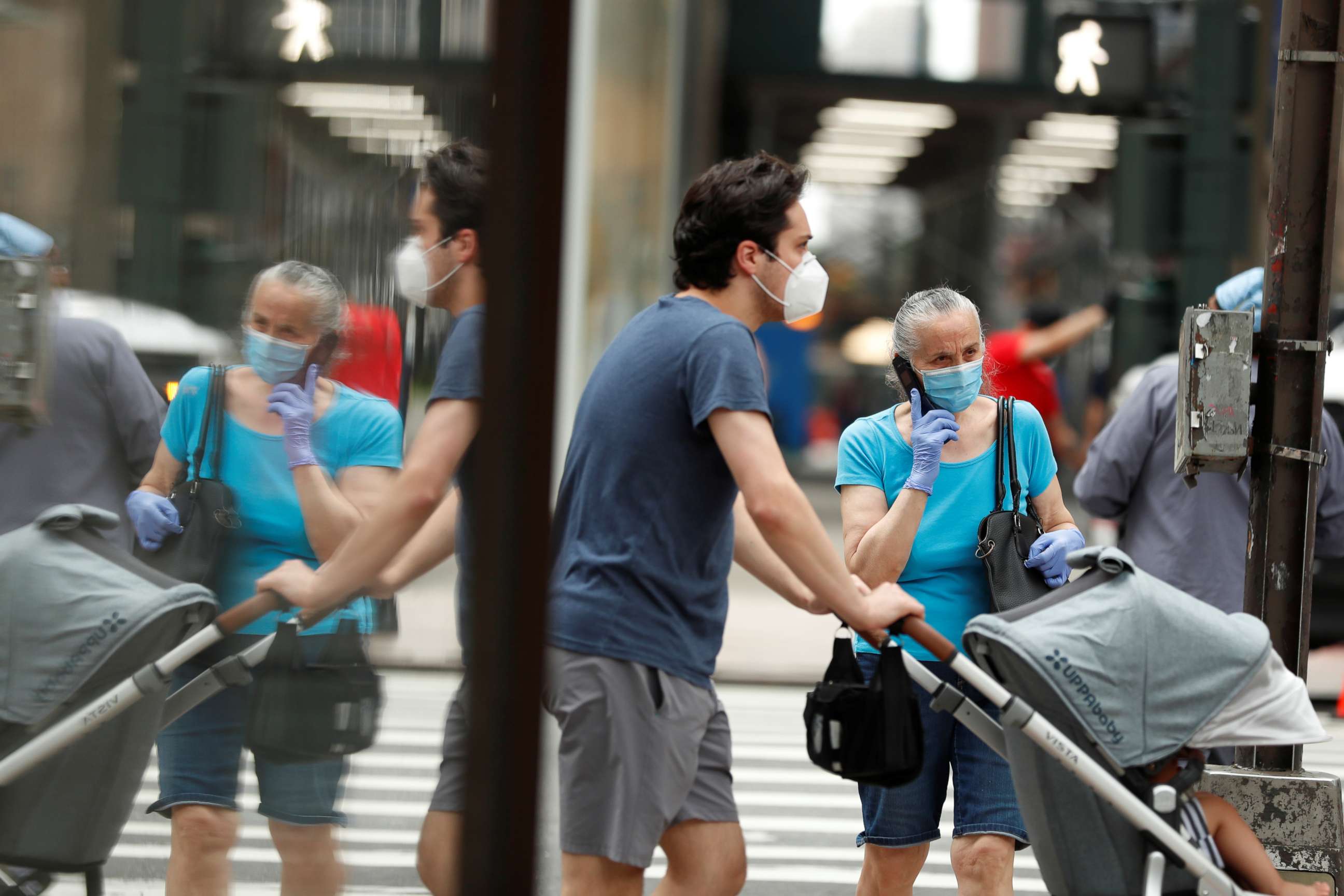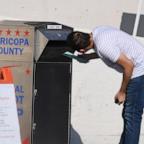A closer look at how 4 states are battling coronavirus with very different outcomes
Florida, Texas, Ohio and Connecticut emerged differently from their shutdowns.
In New York, the original epicenter of the COVID-19 outbreak in the United States, there are signs of life returning to normal as the caseload and fatality rates have been driven down to levels not seen since early spring.
By contrast, the virus is raging in several states in the South and West, propelling the United States to record numbers of daily cases and setting the nation on edge as leaders there debate, and in some cases, move to stem the tide.
There is also everything in between -- states that have still seen relatively little virus transmission and are bracing for an outbreak.
So why have some states been successful in their fight while others have not?
ABC News analyzed the current status and reopening process of four states that emerged with different outcomes following their shutdowns -- Florida, Texas, Ohio and Connecticut.
Texas and Florida are both seeing worrisome coronavirus outbreaks across their states as many residents ignored or abandoned social distancing practices and masking. Both are seeing increases across the board in the rate of positivity (the percentage of coronavirus tests that come back positive), hospitalizations and deaths, and have each set new records for daily cases just this past weekend.
On Tuesday, Texas saw 6,533 hospitalizations across the state -- the most yet -- and Florida reported 9,585 new cases.
In Ohio, cases and hospitalizations have been increasing over the past couple weeks but at a slower rate than in Texas and Florida, and deaths have continued to drop. It's complicated to make a direct comparison among states because of the difference in the way cases are reported, but in Ohio, cases have increased by about 100% in the past couple of weeks, while in Texas, cases have increased by about 150%. In Florida, cases have increased by nearly 250% during the same period.
Connecticut, by contrast, seems to have a handle on its outbreak -- the state has seen a decline in all three categories for well over two months now, according to ABC News' analysis of state-released data.
The situation these states find themselves in may be in part a reflection of their leaders' decisions about shutting down and reopening throughout the pandemic as well as the degree of urgency the public saw in the health crisis early on, experts said. Leaders in Ohio and Connecticut have both placed a heavy emphasis on science and data to proceed with reopening cautiously, and appear to be benefitting from those decisions. Texas and Florida officials, in contrast, put economic concerns first and allowed lax social distancing and minimal face-covering requirements for the public during the crucial first few weeks of reopening, and are now suffering the consequences of an accelerated reopening, according to experts.
Texas
Texas was aggressive -- and early -- in reopening the state's economy. Over the last several weeks, the state has emerged as a top hotspot for COVID-19, reaching record highs in daily positive rates and hospitalizations due to the deadly virus, as well as a rising number of fatalities over the last several weeks.
The state's Republican governor, Greg Abbott, was the recipient of both praise and criticism in appearing to prioritize the state's economic comeback over stricter social distancing measures infectious disease experts urged were key to assure that reopening did not spark a wave of COVID-19 infections.
Abbott issued a stay-at-home order on April 2, and let it expire April 30. The governor was among the first to begin a phased reopening of any state May 1, and by the start of June nearly all businesses were permitted to be open by at least 50%. Within a few short weeks, massive swaths of businesses in the state were back open for business: tanning salons, gyms, parks, beaches, bodies of water, pools, barbershops and salons.
The governor has also continued to avoid mandating masks be worn in the state, calling such a move intrusive to individual freedoms, but has been increasingly – and more fervently – recommending face masks, a simple measure that many health officials say is life-saving.
The month of June has presented significant pitfalls and losses for the state – with COVID-19 hospitalizations rising 36% since Memorial Day. Over the weekend, Houston stopped reporting hospitalization data. In a press conference last Monday, Abbott said, "COVID-19 is now spreading at an unacceptable rate in the state of Texas, and it must be corralled."
Last Thursday, Abbott hit the "pause" button on the state's reopening and ended the performance of elective surgeries in the state's largest counties.
In recent weeks, as positive cases and hospitalizations due to COVID-19 began to surge significantly farther past Texas' previous peaks, there has been a discernible change in tone and tenor of the governor's remarks enforcing the importance of mask-wearing, admonishing younger people for not being more careful and, in general, warning residents of the Lone Star State to stay home.
While the governor laid out several tactics aimed at reducing the virus' spread in Texas without leading to a shutdown of the newly reopened state economy, he said health and financial well-being don't have to be a choice. "We can have both," he said last week. "We can protect lives while also restoring livelihoods. Together, we will keep Texans safe and we will keep our state open for business."
On Friday, Abbott ordered Texas bars to close again and restaurants to reduce to 50% occupancy as the coronavirus outbreak in the state spreads. Additionally, the governor halted river-rafting trips and outdoor events of more than 100 people without local authorities' approval. The previous limitation was for such gatherings of more than 500 people.
Bars were forced to close by midday Friday. The restaurant capacity slashing took effect Monday.
Then on Monday, Abbott said shuttering the state's economy again completely would only be used as a last resort.
In many of Texas' largest cities, local officials have directed their ire at Abbott. "There have been a lot of inconsistent or conflicting messages that have happened," Dr. Umair Shah, the executive director of the Harris County Public Health Department in Texas, recently told ABC News.

Ohio
Ohio Gov. Mike DeWine, a Republican, was one of the first in the nation to respond to the coronavirus pandemic. He, alongside state health director Dr. Amy Acton, was the first to close schools and bars in the country, and shortly after, ordered a statewide stay-at-home order on March 22. By early April, DeWine declared the state had hit a "home run" in flattening the curve and preventing the state from becoming a major hotspot in the country.
While the state did have issues without outbreaks in nursing homes and prisons, in the two months since the state first began reopening on May 1, hospitalizations of the virus have declined and just saw their first increase last week, according to a release from the Ohio Department of Health. The daily number of new cases and hospitalizations are now increasing, according to an ABC News analysis, but fatalities in the state are also falling.
During an interview with ABC News last week, DeWine acknowledged the state is "starting to see some spikes in the southwest we're concerned about," but overall said the state is in "pretty good shape."
Mike Abrams, the president and CEO of the Ohio Hospital Association, agreed. He said that while hospitalizations are increasing, the rate appears to be manageable, he said.
Hospitals are doing "fine" in terms of capacity, Abrams said. Ohio built out three temporary hospitals in convention centers and other spaces early on in the pandemic in case the system was to be overwhelmed, but never ended up using them -- and Abrams does not predict they will need to in the future. A database created early on in coordination with the governor helped to track every hospital's capacity, supplies and PPE, Abrams added.
DeWine said he was grateful he made the decision to cancel large events and shut down the state early on.
"It certainly was the right decision," DeWine stated. "If it, you know, people question us at the time -- it looked a little premature or a lot premature -- I think two people at a time, but it was certainly in hindsight the right decision."
DeWine's own behavior may have played a role as well. While he did not mandate masks in the state, DeWine has been unequivocal about their importance and wears his own mask to briefings, only taking them off when at the podium. He also took a coronavirus test at a press briefing, like New York Gov. Andrew Cuomo did, a move he told ABC News was meant to "encourage" people to do the same.
Still, DeWine's heavy emphasis on leading by science has not always been popular. His administration has faced backlash from citizens as they proceeded cautiously. Former state health director Dr. Amy Acton -- who gained national attention and praise for leading Ohio's response to the outbreak -- stepped down in June after months of anti-shutdown protests, lawsuits and harassment to become DeWine's chief health advisor.
"Well my message to people who were upset with Dr. Acton, or health director, is they should direct their ire to me, they should protest at my house, they should protest me," DeWine said, defending his former health director. "And they have, but you know, they should leave her alone."
After announcing her resignation during a press conference, Acton said it was a "deep honor" to have served in Ohio.
"I am here, I am more determined than ever to advance the health and well being of Ohioans, and to serve on behalf of the governor," Acton said.
Still, some worrisome trends in cases and hospitals have begun to emerge in parts of the state in recent weeks -- after weeks of gradual decline, daily new cases have doubled in the past couple weeks and hospitalizations are slowly climbing back up as well -- leaving questions about how the governor will be able to handle them the second time around.
Connecticut
One of the hardest-hit states early on in the pandemic, Connecticut, was reporting more than 2,000 new cases and 200 new deaths a day at its peak in the third week of April. There were about 2,000 COVID patients hospitalized at that time.
About a month and a half into its reopening, on Monday, the state reported just 59 new cases and four deaths. And only 99 COVID patients were currently hospitalized.
Health experts noted the obvious difference in size of Connecticut and Texas, but emphasized the significance of a robust collaboration of the state government, local officials and health systems across the state, coupled with diligent participation from the public. They also say Gov. Ned Lamont, a Democrat, was very cautious about reopening, making sure all metrics were met before people went out again.
Importantly, by the time Lamont's stay-at-home order expired on May 20 to kick off Phase 1 of reopening, cases, deaths and hospitalization had been on a steady decline for nearly a month.
Bars -- which have been cited as problem areas in other states -- have yet to open. They are were finally expected to open next month as part of the third phase of reopening, though the governor on Monday said he's reconsidering opening up bars as cases in other states surge.
Lamont's executive order mandating social distancing and face covering statewide implemented in April, is also still in effect. Dr. Victor Morris, assistant chief medical officer at Bridgeport Hospital of the Yale New Haven Health System, said the public's close adherence to the order has also played a big role in slowing down the spread of the virus.
"When I'm indoors at a store or a grocery store, Dunkin' Donuts, or wherever I might go, everybody has a mask," Morris said.
"I think coming out of it now, a difference is that we lived it -- people in Connecticut saw how bad it was," Morris added.

At Bridgeport Hospital, which was one of the busiest hospitals near the New York City border, which at its peak had 226 COVID patients hospitalized, 66 of them in intensive care and 44 of them on ventilators, now has a total of 16 COVID patients, Morris said. Just five of them are in ICU and two are on ventilators. Across Yale New Haven, COVID hospitalization has come down to 43 from 760 at its peak. Yale New Haven in total has discharged about 3,000 COVID patients so far, Yale New Haven's chief medical officer Dr. Tom Balcezak said.
Balcezak said while he feels the state is at a very stable and comfortable level right now, he's "absolutely" worried about a second resurgence, saying the numbers across the country are "pretty terrifying."
He said he's also worried about more people starting to go out and have larger gatherings in their private yards and homes in the summer, but added he believes the state has built a robust infrastructure and adequate guidelines that the public has been following well.
"This is a disease for which there is no cure," Balcezak said. "There is no medical, meaning vaccination, prevention, and once you get it, our only therapies ... are our supportive therapies. The number one weapon we have to fight this disease is our classic good old fashioned public health measures, and the public needs to know and pay attention to that."
Florida
Florida, on the other hand, has seen an explosion of coronavirus cases since reopening the economy, and Gov. Ron DeSantis, a Republican, has faced significant criticisms for his handling of the pandemic since the outbreak began.
As of Tuesday, Florida's health department has reported a total of 152,434 positive cases and 3,505 deaths.
DeSantis, reluctantly issued a statewide stay-at-home order on April 1 and opened back up on May 4, with a total of 36,897 coronavirus cases statewide and reporting less than 1,000 cases per day. Florida slowly began to reopen with restaurants and retailers allowed to operate with limited capacity. That same month, even though the state saw increases larger than 1,000 in a single day three times, DeSantis announced the state would enter "full phase one" of reopening.
But nearly two months later, the state has seen a record-setting pace of new coronavirus cases and hospitalizations over the last few weeks. The explosion of cases amid the reopening has resulted in counties and cities rolling back on reopening plans and implementing stricter facial covering requirements.
After the state crushed its record for new coronavirus cases, reporting 9,585 new daily infections over the weekend, city officials announced the closure of several beaches and county-owned parks across the state for the Fourth of July weekend.
"I can foresee a Fourth of July where you have throngs of people on the beach, very difficult to keep social distancing, people getting together, especially young people getting together," said Miami-Dade Mayor Carlos Gimenez at a conference on Friday. "We now see this virus is prevalent in this age group and we want to keep this down."
Miami-Dade, along with Broward and Palm Beach counties, is still in phase 1 of the state's reopening plan. The rest of the state has been in phase 2 since June 5.
Following the surge of cases last week, DeSantis imposed new restrictions, ordering bars in the state to stop serving alcohol.
But DeSantis said he has no plans to issue a statewide mask requirement at this time, despite the recent surge in coronavirus cases, leaving it up to local leaders to decide on mask mandates and penalties.
Miami-Dade and Broward counties issued facial covering requirements since early April, requiring people to wear masks when visiting essential businesses.
Most other counties began implementing mask requirements just last week, as the state had been reporting increases in coronavirus cases.
Florida's elected officials have also said residents aged 18-44 are responsible for the state's recent spike in cases. That group is going out more and socializing at a greater rate, DeSantis said Sunday. According to DeSantis, the median age of positive COVID-19 cases in March was 65 years old but in the past few weeks, it had dropped to 35.
"What we've seen, particularly over the last week, is a real explosion in new cases amongst our younger demographics," DeSantis said in a news conference in Orlando earlier this week.
Dr. Todd Husty, Seminole County's medical director, who has seen an explosion of cases in the county in central Florida, believes younger people not following CDC guidelines are to blame.
"Since Memorial Day, we have seen the impact of other large social gatherings, people crowded shoulder to shoulder with no facial covering and no social distancing, said Husty. "Sometimes younger people think they're invincible but they have to face the reality that they're not immune. I think state officials really have to think about continuing to reopen because what we are seeing is very alarming."




